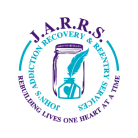What Is a Sober-Living House Like?
Sober-living environments vary widely. Some are on the campus where drug and alcohol addiction treatment is provided, and others are independent homes, apartments or condos. The number of residents depends on the size of the home or licensed beds in a facility. In most sober-living environments, bedrooms are shared, but some do provide individual rooms. In some cases, the more-senior residents will get a single room. Each facility may be structured differently in terms of rules. Typically, there are rules about shared living spaces and individual room maintenance and chores, visitor hours, mealtimes, curfews and Twelve Step meeting requirements.
How Long Can You Stay in a Sober-Living House?
How long you stay depends on the sober-living facility and your progress in recovery. Some sober-living facilities are only offered for as long as you are in the treatment program. For others, you can remain in a sober-living environment after treatment is completed. The time spent in a sober-living home depends on a number of factors including strength of recovery from addiction, progress on clinical milestones and the personal living situation at home. A minimum stay of three months is recommended, but many benefit from a longer stay for sustained sobriety.
What Are the Requirements to Get Into a Sober-Living Home?
Some facilities require a minimum number of days of sobriety from substance abuse, but many will work with you to determine if you’re a good fit.
How Much Does Sober Living Cost?
The cost varies by the type of sober-living environment and length of stay. The more services provided, the more it’s going to cost. Location is also a factor in the cost. Some sober-living homes have a base rate with additional costs for added services. When you’re looking for a sober recovery home, be sure to ask what’s included in the monthly rate and what is extra. Some examples of additional services may include transportation to appointments, recovery coaching, meals, and gym memberships. But when considering some of the services offered, make sure they’re services that help support your sobriety. Part of living in recovery is “showing up for life,” meaning doing things for yourself that make you a successful, contributing member of society. When in active addiction, we tend to ignore the things that make us successful. So when getting back on our feet and in recovery, cooking and cleaning for ourselves is part of a healthy recovery plan.
How Do You Find a Sober-Living Home?
Since sober living typically follows addiction treatment, getting a referral from the treatment provider is recommended. Other referral sources may include the criminal justice system, a mental health professional, Twelve Step meeting participants, or friends and family. Whatever the source of the referral, take a tour of the facility and talk to the people living there to decide if it’s the right fit for you.


